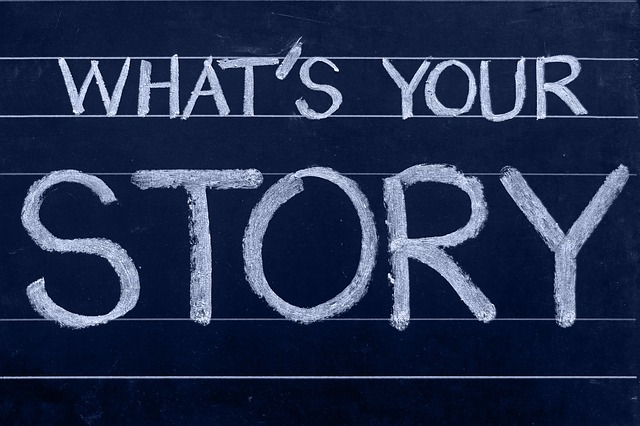Telling a better story
 A pep talk for your team – breaking it down
A pep talk for your team – breaking it down
<Note: Friends this is intended for Audio – so listen to the RunRunLive Podcast or become a member to get the audio version of this>
For this post I’m going to walk you through some shop talk on how to put together a compelling presentation or speech. I’ll set it up for you. I’ll present it as I would in real life. And then I’ll break down the different mechanics and structures I used and why.
I don’t consider myself a born story teller and I’m certainly not an extrovert. But, like anything else the techniques and structure of speaking, whether in front of a big room or standing at the bar, are things you can learn and practice. And, like everything the more you learn the tools and the more you practice them the better you get.
I hardly ever try to improvise a speech off the cuff. Even if it is something mundane like a talk with an employee or a telephone call with a client. At the very least I will have an objective and talking points written out.
For any speaking engagement I will start with my objective. Then I will think about the theme that supports that objective. Then I will lay out a rough outline of the flow. Then I will sit down and write out a full script, using the techniques we’ll talk about here.
Then I will practice reading it through for time and to test effectiveness. Then I will go off script and practice remembering my way through the same speech without notes and see where I get fouled up.
Now I’m going to give you a speech. See if you can listen for the theme. See if you know what my objective is. See if you can hear the techniques I’m using.
Ready – here we go.
…
Who here has ridden a bike or even better, taught a child how to ride a bike?
Me too. I remember teaching my kids how to ride a bike. Remember those first wobbly pushes and scraped knees? Remember when they finally figured it out and it was like you taught them how to fly?
<Pause to let the word ‘fly’ sink in>
I have a normal road bike that I ride but my favorite thing to ride is my Mountain bike. <picture> I ride on the trails up where I live in New England. Occasionally I’ll do 100k or 100mile races.
These rides and races have technical sections, with lots of roots and rocks and steep uphills and steep downhills.
You might think that the hardest parts are the uphills, and it’s true, they are hard. But really – the hardest part to master is the downhills.
Picture it. (act it out) Here we are, holding on for dear life, flying at 20 miles per hour or faster down a hill that is covered with big rocks and roots and other obstacles. There are tree trunks inches from you on either side, or maybe a terrifying drop off. If you crash, it’s going to hurt. If you crash you may break something. Maybe something important. If you crash there will be blood.
It’s very important not to crash.
What do you think the number one reason people crash in these downhill sections is? Is it the speed? Is it the obstacles? Is it their technique?
No. The number one reason people crash on these steep downhills is fear. That’s it. If you’re afraid of crashing, you will crash.
You have to commit. You have to go all in, in the moment. You have to trust your training. You have to stay in the moment. And you have to relax into that flow state where you see the trail unfolding in front of you in slow motion and you flow.
The same is true of the obstacles. If there is a big rock in the middle of the trail, the surest way to hit that rock is to focus on it.
If you are crossing a narrow ledge or bridge you need to focus on the center of the bridge. If you start thinking about, or being afraid of riding off the edge of the narrow bridge you will sure enough do just that.
<Pause>
You see, in essence, whether or not you crash is dependent on your inner dialog. It is dependent on the story you tell yourself. You can’t control the steepness of the hill, you can’t control whether there is a rock in the trail, you can’t control the width of that bridge. All you can control is what’s going on in your own head.
The narrative you tell yourself as you are hurtling down that hill dodging obstacles manifests your reality. You create you outcome with your inner narrative.
The same is true in our lives and in our work, our craft. Our inner dialogue greatly impacts our results. But more importantly our inner dialog, the stories we make up for ourselves impacts those around us and our organization.
Everyone in this room, whether we like it or not, is a leader. You are on stage. The rest of the organization takes a cue from you, your attitude and your narrative.
This week we are going to be launching new products. We are going to be talking about what works and what doesn’t. We are going to be brainstorming innovations that we can use going forward.
As you go through the next couple days you are going to be interacting with the rest of the team and I want you to be cognizant of the stories you are telling. I want you to act like the thought leaders that you are.
You have a choice to make. You can bitch about things that don’t work, or people who don’t’ measure up or bad decisions that were made by management. You’ll certainly hear all those stories being told.
Or you can choose to tell a better story. A story about how excited you are about the fantastic new products we get to sell, a story about how psyched you are with the impactful positive way we get to help our customers and story about how grateful you are to be working with such a high quality team.
That’s my challenge to you this week. That’s my ask.
Recognize that moment when someone wants to drag you into a bitch session…and you know it will happen.
Be a leader. Tell a compelling story. Tell a better story.
Because, although all of our trails have roots and rocks, if we focus on those we’ll crash. If we focus on the path forward we can fly.
…
So what was my objective here? My objective with this speech was to positively influence the ‘chatter’ at this company meeting.
What was my theme? My theme was ‘tell a better story’.
Here are some of the techniques I purposely wrote into the talk.
First sentence. “Who here has ridden a bike or taught a child to ride a bike?” In this brief opening paragraph I draw the audience in with a universal statement. I connect to them with a shared, universal, highly emotional moment – when your child learns to ride a bike. I transition on the word ‘fly’ because I’m going to call back to that at the end.
Then I transition from this into my story. I keep the story short but, when I tell the bit about going down a hill I add a lot of detail to put them in the seat with me and feeling the terror of that.
Then I use repetition on the word ‘crash’ to make my point.
When I ask why people crash I use the rule of 3. “Is it the speed? Is it the obstacles? Is it their technique?”
You will see and hear many places where I use repetition or the rule of 3 to flow the points.
You will also hear places where I pause for effect. This is typically right before or right after an important word or point. A pause is silence. Silence when used appropriately is like using a sledgehammer. Humans are naturally alerted by silence.
Then I put my call to action into place using very short and direct phrases.
At the end I summarize by calling back to the word ‘Fly’ that I opened with. I try to make an emotional connection.
Listen through it again and see if you can hear me working. See if you notice the fingerprints on this piece now.
Anyone can write for effect in giving a talk. It’s all technique and practice. If you put any effort at all into it you will be better than 80% of everyone else.
…
Encore…

